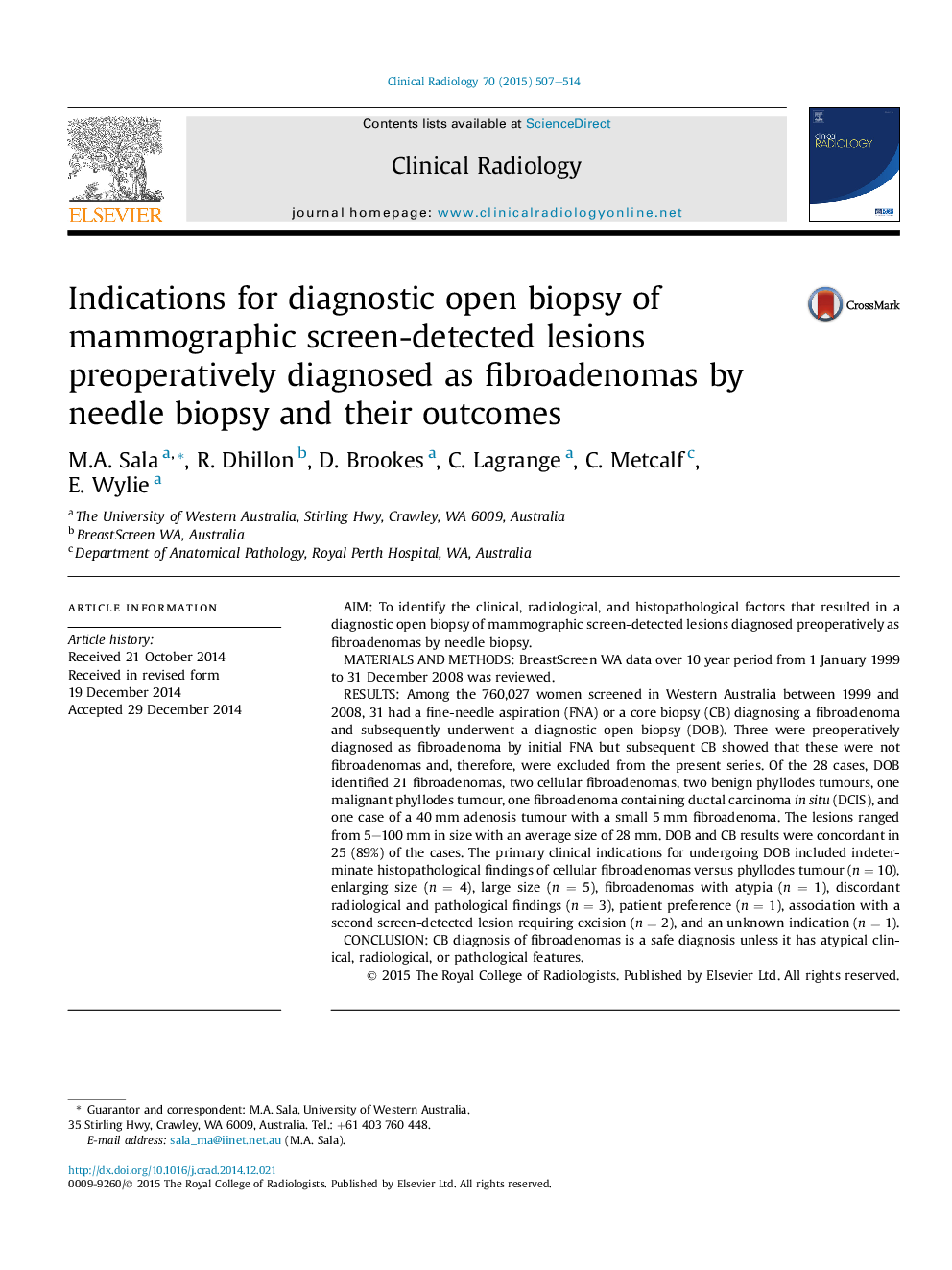| Article ID | Journal | Published Year | Pages | File Type |
|---|---|---|---|---|
| 6190947 | Clinical Radiology | 2015 | 8 Pages |
â¢The aim was to identify factors that lead to excision of benign fibroadenomas.â¢Screen detected fibroadenomas must be adequately sampled to exclude malignancy.â¢Large, enlarging, cellular or atypical lesions should undergo excision.â¢Screen detected fibroadenomas can be accurately assessed using core biopsy.
AimTo identify the clinical, radiological, and histopathological factors that resulted in a diagnostic open biopsy of mammographic screen-detected lesions diagnosed preoperatively as fibroadenomas by needle biopsy.Materials and methodsBreastScreen WA data over 10 year period from 1 January 1999 to 31 December 2008 was reviewed.ResultsAmong the 760,027 women screened in Western Australia between 1999 and 2008, 31 had a fine-needle aspiration (FNA) or a core biopsy (CB) diagnosing a fibroadenoma and subsequently underwent a diagnostic open biopsy (DOB). Three were preoperatively diagnosed as fibroadenoma by initial FNA but subsequent CB showed that these were not fibroadenomas and, therefore, were excluded from the present series. Of the 28 cases, DOB identified 21 fibroadenomas, two cellular fibroadenomas, two benign phyllodes tumours, one malignant phyllodes tumour, one fibroadenoma containing ductal carcinoma in situ (DCIS), and one case of a 40 mm adenosis tumour with a small 5 mm fibroadenoma. The lesions ranged from 5-100 mm in size with an average size of 28 mm. DOB and CB results were concordant in 25 (89%) of the cases. The primary clinical indications for undergoing DOB included indeterminate histopathological findings of cellular fibroadenomas versus phyllodes tumour (n = 10), enlarging size (n = 4), large size (n = 5), fibroadenomas with atypia (n = 1), discordant radiological and pathological findings (n = 3), patient preference (n = 1), association with a second screen-detected lesion requiring excision (n = 2), and an unknown indication (n = 1).ConclusionCB diagnosis of fibroadenomas is a safe diagnosis unless it has atypical clinical, radiological, or pathological features.
